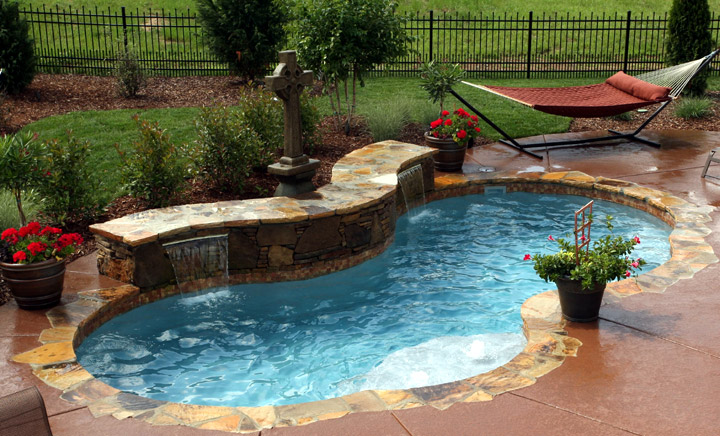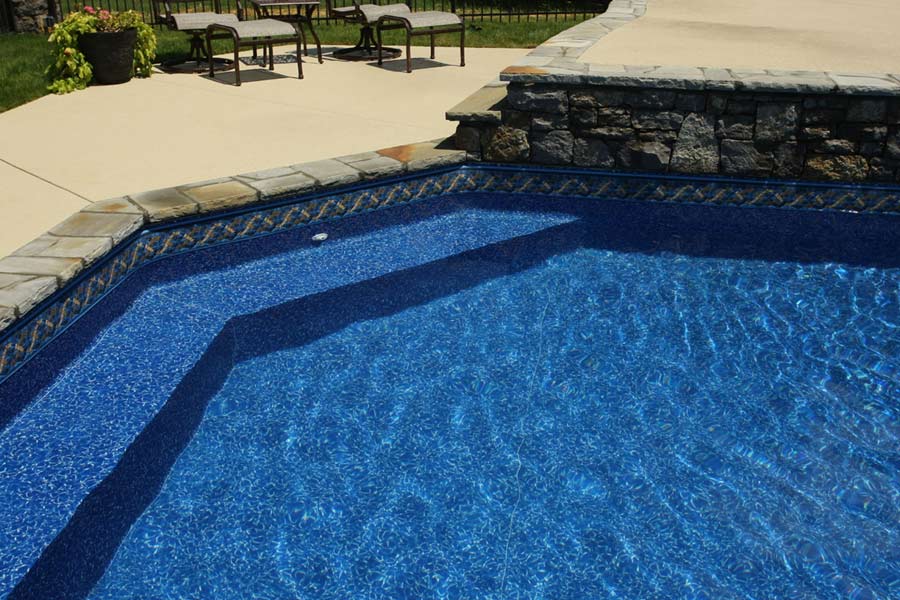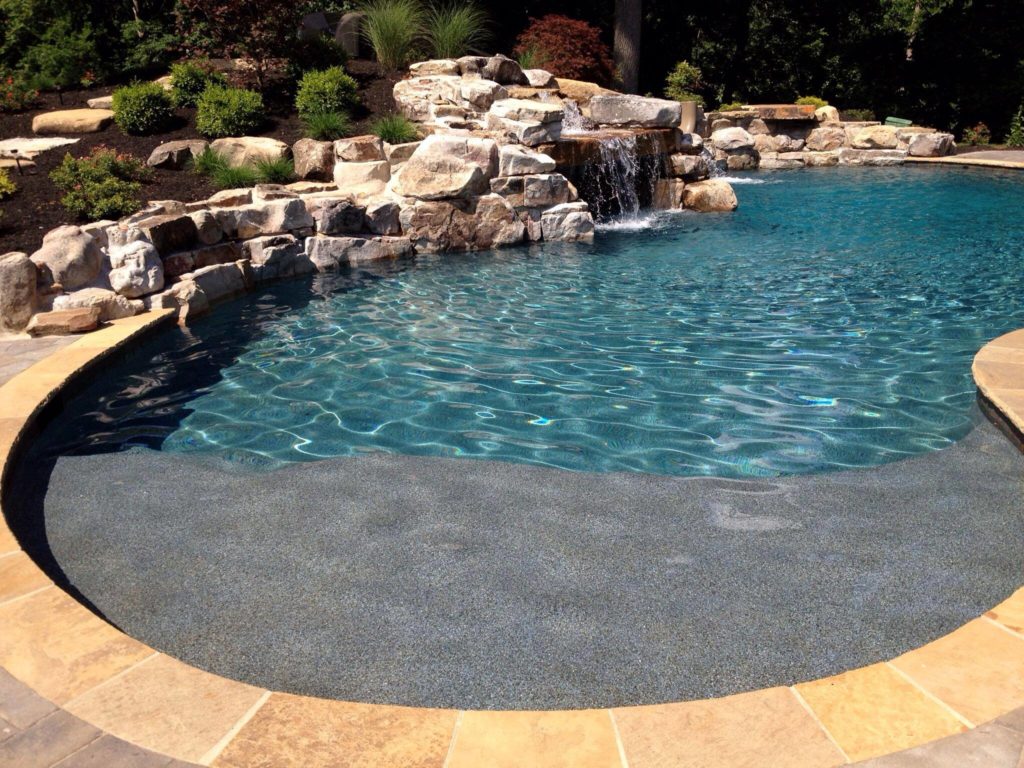Introduction to The Ultimate Pool Guide
When we set off on this bold quest to build the Ultimate Inground Pool Guide, our mission was to answer the most important questions that thousands of people just like you have asked over the years. Building an inground pool is a large project and one that shouldn't be taken lightly.
All pool projects have hundreds of moving pieces that can either go well or fail miserably.
Go into it with your eyes wide open and, when your dream pool is finished, you'll enjoy the cool relaxing water knowing that you were well prepared along the journey. This guide will take you from novice pool fan to educated pool owner. We've indexed the sections for easy reference so you can bookmark them, or come back to this page and quickly find the information you need most.
So let's dive right in...
Index to the Ultimate Inground Pool Guide
What Are Pools Made Of?
If you dig a hole, you can make a pool out of any impermeable material...rubber liner anyone?
For a professional installation there are only 3 perfect substances that hold water, look great, and make for an awesome pool.
Inground Pool Installation Process
The installation process is where a pool project fails or succeeds.
Regardless of the kind of pool you're installing, knowing what to watch out for will make your dream project a reality instead of a nightmare.
Fiberglass Pool Problems
What kind of problems do fiberglass pools have?
Vinyl Problems
What kind of problems do vinyl pools have?
Concrete Pool Problems
What kind of problems do concrete pools have?
Inground Pool Maintenance
With so many things to care for, how do you maintain an inground pool without going batty?
What Are Pools Made Of?
You'll typically find pool liners are 1 of only 3 types used in the pool industry: Fiberglass liners, vinyl liner over a steel wall form, or concrete. Concrete pool liners are also called 'gunite' or 'shotcrete' by pool insiders.
Let's take a look at each one...
Fiberglass Pools
Fiberglass pools are pre-formed which usually makes them the fastest to install and can go in as soon as your yard is leveled and prepared.
Fiberglass pool manufacturing is thriving and there are hundreds of styles, shapes, and sizes to choose from. A modern fiberglass pool is easy to maintain, lasts for decades if cared for properly, and looks as good as any custom pool does.
Vinyl Inground Pools
Vinyl inground pools offer you the most customizeable sizes and shapes of almost any style of pool. Concrete is the only other material with a slight edge over vinyl when it comes to designing a free-form pool.
A Vinyl pool is made up of a custom designed steel wall, with a vinyl liner covering the inside of the structure. Here's our vinyl pool image gallery, and everything you ever wanted to know about a Vinyl pool including comparisons, benefits, and options.
Concrete Inground Pools
Concrete inground pools give you the most flexibility when it comes to custom shapes and sizes. If you can image a shape, you can build it in concrete as long as it will hold water.
Concrete or 'shotcrete' as it's called in the pool business, is also durable and a bit more pet friendly than vinyl. Our customers have designed some beautiful pools in concrete, and our nozzlemen (the guys that can make or break a shotcrete installation) have more gray hair than anyone in the business.
Read more about Concrete pools...
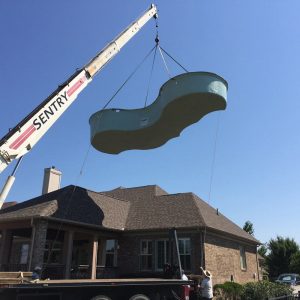
Inground Pool Installation Process
This section guides you through the inground pool installation process for any kind of pool.
The process is slightly different depending on the type of pool that's being installed:
- A concrete pool would have re-bar and various other structural pieces added to the hole before the concrete is sprayed;
- A fiberglass inground pool goes into the ground almost immediately after the site is leveled and prepped;
- And a Vinyl Liner Pool has a custom built steel wall that's lowered into place which forms the shape of the pool.
Here are the high level steps you'll go through regardless of what your awesome pool is made of...
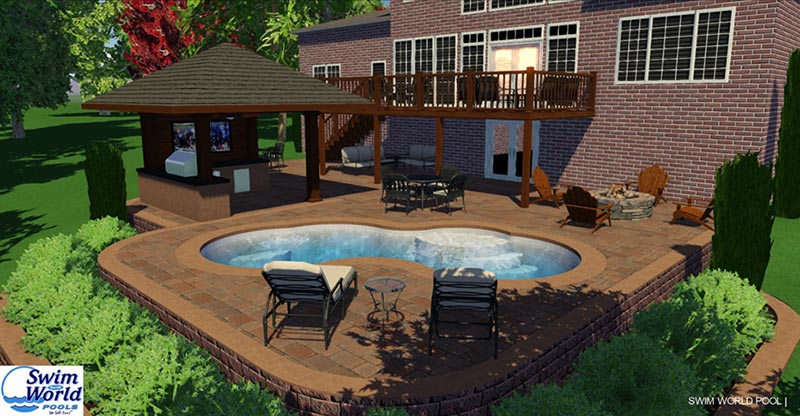
Phase 1: Pool supplies delivered to the site
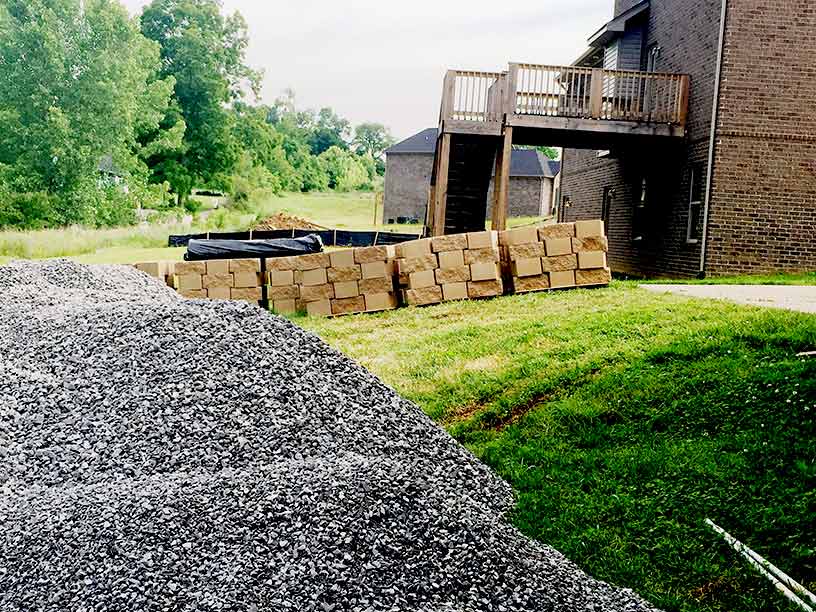
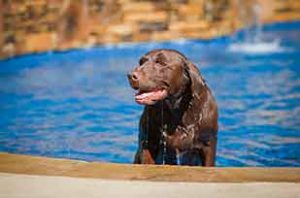
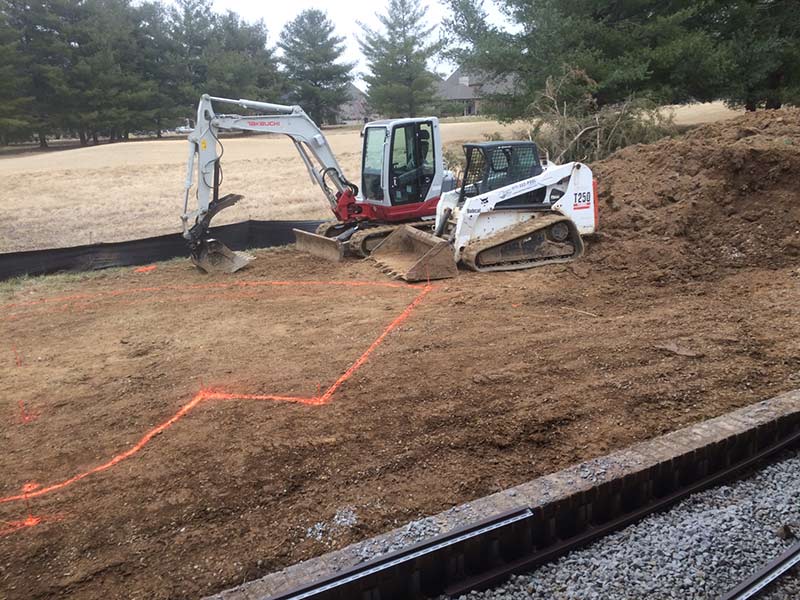
Phase 1: Digging the hole for the pool
Phase 1: Pool Delivery
If your pool is fiberglass or vinyl, the pool shows up to your house 2 to 3 days after the hole is leveled to specification. A fiberglass pool almost looks ready to swim in when it arrives. A vinyl liner pool won't look like a pool at all - the steel frame that becomes the walls of your pool show up in pieces and is bolted together as soon as they're in the hole.
A concrete pool needs a solid backbone first if it's going to hold the cement. A re-bar frame is assembled inside of the hole, and the plumbing for the pumps and any water features are connected before the cement truck gets to your house. Pictured are what each kind of pool will look like at this stage of construction.
Fiberglass pool arriving on site.
Vinyl liner pool steel framing
Concrete pool re-bar underpinning
Phase 2: Gravel, leveling, and backfilling the pool
Now that your pool is safely in your backyard, the crew brings in a whole lot of gravel and levels the ground with it so the pool can sit perfectly flat. You'll see a lot of measuring, adjusting, and tweaking to get the hole just right.
The type of pool you install determines the leveling requirements. Fiberglass pools lay on a gravel bed that conforms to the slope of the pool.
A vinyl pool has a steel wall which supports and forms the overall shape. The bottom of a vinyl pool is leveled to the design and the liner is placed over the entire structure.
A concrete pool is a different project. The site is leveled to the 3D design specifications and then a re-bar 'backbone' is built up to give the concrete strength and flexibility.
The pool installation actually begins once the leveling process is complete.
It's usually at this point that reality sets in, and you start believing you'll actually have a pool in your backyard. Grab your camera, and take lots pictures. A few years from now, you won't believe that your yard actually looked like it did right now.
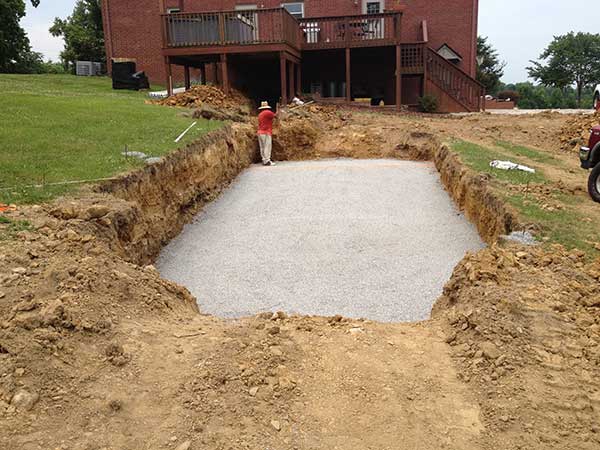
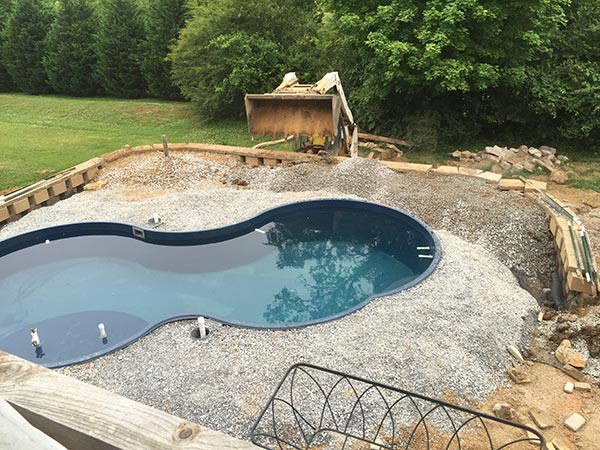
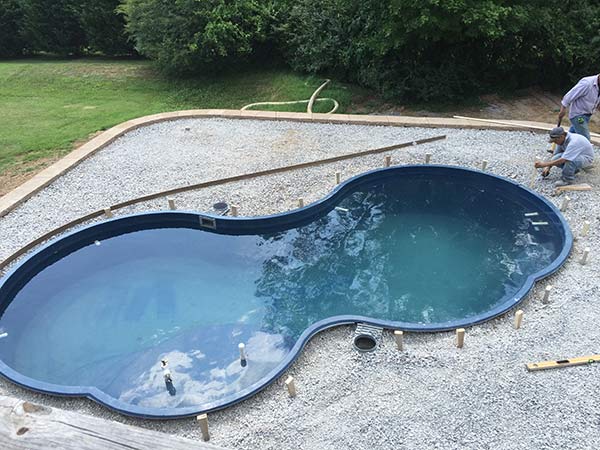
3 very important things happen during phase 2
Electrical
Before the pool is backfilled with gravel it must be 'bonded'. Bonding is like grounding an electrical circuit to prevent static electricity from building up and shocking you. Bonding involves running copper wire around the perimeter of the pool and back to the pad where the pumps and filters are. The conduit for the pool lights is also set in place until the lighting is ready to install. When the electrical is complete, it's time for your state inspector to check everything. The state inspectors usually get to the site within 6-10 days or sooner. If you happen to see the inspector and he or she leaves a blue inspection sticker (TN), let your pool builder know it's there so they can move on to the next phase.
Plumbing
The pool plumbing is connected to the pumps and filters during phase 2 of pool construction. The plumbing is pressure tested to ensure it doesn't leak. Some cities and counties require all new plumbing lines to be inspected. Depending on your location, your pool contractor may need to schedule an inspection before the project is complete. Your builder should setup and schedule all the inspections for you. Ask your builder if they usually keep all plumbing level, both on straight lines and angles, as well as hydraulically balanced. Leveling the plumbing now avoids expensive repairs and maintenance problems in the future.
Backfill
Once all the inspections are done it's time for gravel! The pool should be backfilled with gravel instead of dirt for stability and to prevent settling over time. You can see an example of backfilling in the video above. The gravel forms a strong base around the pool, permanently locking it in place. When your pool builder is backfilling, they'll fill the pool with water at the same time to keep the inward and outward wall pressures even.
Concrete Pool Problems


